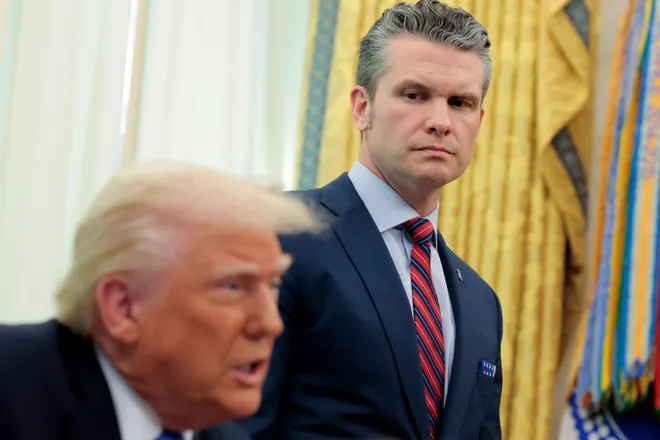Vice Adm. Shoshana Chatfield, the United States military representative to NATO, has been removed from her post by the Trump administration. The dismissal is part of a broader purge of senior military leaders. Chatfield, a Navy pilot and former president of the Naval War College, was dismissed without explanation. The Pentagon has not commented on the move, which comes days after the removal of Air Force Gen. Timothy Haugh, director of the National Security Agency.
More Senior Officers Removed Without Explanation
The removal of Vice Adm. Chatfield follows a string of unannounced firings within the military leadership. In less than three months, ten senior officers have been let go. These include some of the most experienced generals and admirals in the armed forces.
Last week, Gen. CQ Brown, the former chairman of the Joint Chiefs of Staff, was also dismissed. Brown had served as a key military figure and was vocal about diversity and racial reconciliation in the military. His departure, like Chatfield’s, came without any official statement.
Pentagon Stays Silent as Firings Continue
Despite growing concern, the Pentagon has chosen not to issue public statements about the recent firings. Defense Secretary Pete Hegseth, who has criticized diversity initiatives, has led the removal of multiple high-ranking officers. His critics say the move undermines military leadership and morale.
Sen. Jack Reed, a senior Democrat on the Armed Services Committee, strongly condemned the actions. In a statement, he called Chatfield’s firing “disgraceful” and criticized Republican lawmakers for staying silent.
“In less than three months, President Trump has fired 10 generals and admirals without explanation,” Reed said. “I cannot fathom how anyone could stand silently by while the President causes great harm to our military and our nation.”
Women Leaders Also Targeted
Vice Adm. Chatfield is not the only high-ranking woman removed from a key position. The Trump administration has also fired Adm. Linda Fagan, the former commandant of the Coast Guard, and Adm. Lisa Franchetti, the former Chief of Naval Operations. Both had been praised for their leadership and service.
All three women had been confirmed by the Senate in recent years with strong bipartisan support. Chatfield, in particular, was unanimously confirmed for her NATO post in December 2023.
Diversity in the Crosshairs
Secretary Hegseth has made his views on diversity clear. In a January 29 memo, he ordered a task force to eliminate military diversity programs created during the Biden administration.
At a Pentagon town hall earlier this year, Hegseth said that diversity initiatives weakened the armed forces.
“I think the single dumbest phrase in military history is ‘our diversity is our strength,’” he said. “I think our strength is our unity. I think our strength is our shared history.”
This stance has sparked widespread debate. Critics argue that removing diversity programs harms the military’s ability to adapt and represent the broader American population.
Growing Concerns in Congress
Members of Congress, especially Democrats, are raising alarms. They say the lack of transparency and the pattern of firings could threaten national security.
“This is not about politics,” Reed added. “It’s about readiness, leadership, and the safety of our troops.”
Despite calls for answers, the Trump administration has not addressed the reasons behind the shake-up. The Pentagon has declined multiple requests for comment.
Political Impact and What Comes Next
With the presidential election approaching, some observers see the moves as an attempt to reshape the military leadership before a possible second Trump term. By removing officers linked to previous administrations or those who support diversity, critics say the administration may be creating a more loyal and ideologically aligned chain of command.
This pattern raises questions about the independence of the military and its role in a democracy.
The dismissal of Vice Adm. Shoshana Chatfield marks a new chapter in the Trump administration’s ongoing overhaul of military leadership. As more senior officers are removed without explanation, lawmakers and military analysts are voicing concern over the direction of the U.S. armed forces. The lack of clarity and transparency is fueling unease about the future of military leadership in the United States.

